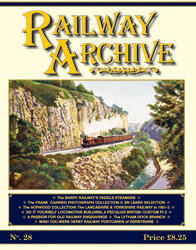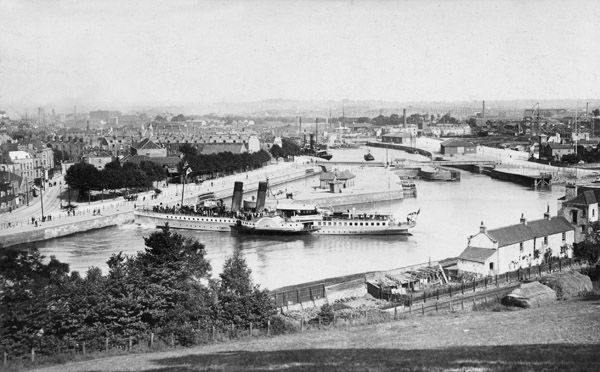Railway Archive Issue 28

Railway Archive Issue 28
80 pages. 275x215mm. .
ISSN 1477-5336 28
£8.25
80 pages. 275x215mm. .
ISSN 1477-5336 28
£8.25
Contents: The Barry Railway’s Paddle Steamers by Stephen Phillips, p. 3; The Frank Carrier Photograph Collection 3: An L&NER Selection by David Postle & KRM, p. 25; The Hopwood Collection: The Lancashire & Yorkshire Railway in 1901-2 by The Rev’d Canon Brian Arman, p. 39; Do It Yourself Locomotive Building A Peculiar British Custom: Part 2 by Philip Atkins, p. 45; A Passion For Old Railway Engravings by Jim Harter, p. 53; The Lytham Dock Branch by Neil Parkhouse, p. 63; Wish You Were Here? Railway Postcards of Derbyshire by John Alsop, p. 67

Railway Archive Issue 28 - Sample Images

From 'The Barry Railway's Paddle Steamers' : This remarkable and rare photograph was produced as a postcard by W.A.W. Sprod, Stationer, Stokes Croft, Bristol. The date is 1905, probably June, and Gwalia is shown swinging around near the entrance to Bristol's Cumberland Basin. She has brought passengers along the River Avon into the very heart of P.&A. Campbell's Bristol territory. Contemporary Barry Railway publicity described these vessels as 'palatial' and there can be no doubt their appearance at Hotwells caused the Campbell brothers to literally 'see red'. The Hotwells landing stage is just off picture to the left, as is Brunel's Clifton suspension bridge. In the lower right corner can be seen the GWR line to Portishead; just off picture to the right was Rownham station, which was renamed Clifton Bridge in 1910. The photographer is looking in a south-easterly direction and has captured the entrance locks to Cumberland Basin, beyond which was Bristol's floating harbour. The locks were necessary to lock in water at high tide, in order to keep docked vessels afloat whilst the tidal river all but disappeared at low tide. This view shows a flood tide, with Gwalia being turned through the skilful use of ropes attached to quayside bollards. The vessel's steam operated warping capstans are reeling in the ropes under the watchful eye of the Master, Captain James, with a good display of exhaust steam coming from her forward capstan. The port bow rope has been slackened having done its work. After completing this manoeuvre, Gwalia will berth alongside the Hotwells landing stage ready for the return journey, which would be completed on the same high tide. The smudge of black from the lower porthole in front of the sponson, is where the boiler firebox ash was ejected and clearly illustrates the difficulty in keeping the light grey hull clean. The Barry Steam Vessels Act allowed Barry vessels to call at Bristol from Barry with summer excursions but did not allow passengers to be embarked, other than those previously brought over from Barry. The Barry Railway, however, were blatantly ignoring the terms of the Act, so this trip probably originated (illegally) from Cardiff. The Prince of Wales feathers pennant is clearly seen flying, together with the ship's name pennant. In the far right distance can be seen the steel framework for one of three bonded tobacco warehouses, the first of which – A Bond – was built in 1905. Much of the tobacco in these warehouses was for the W.D. & H.O. Wills Company. Stephen Phillips' Collection
